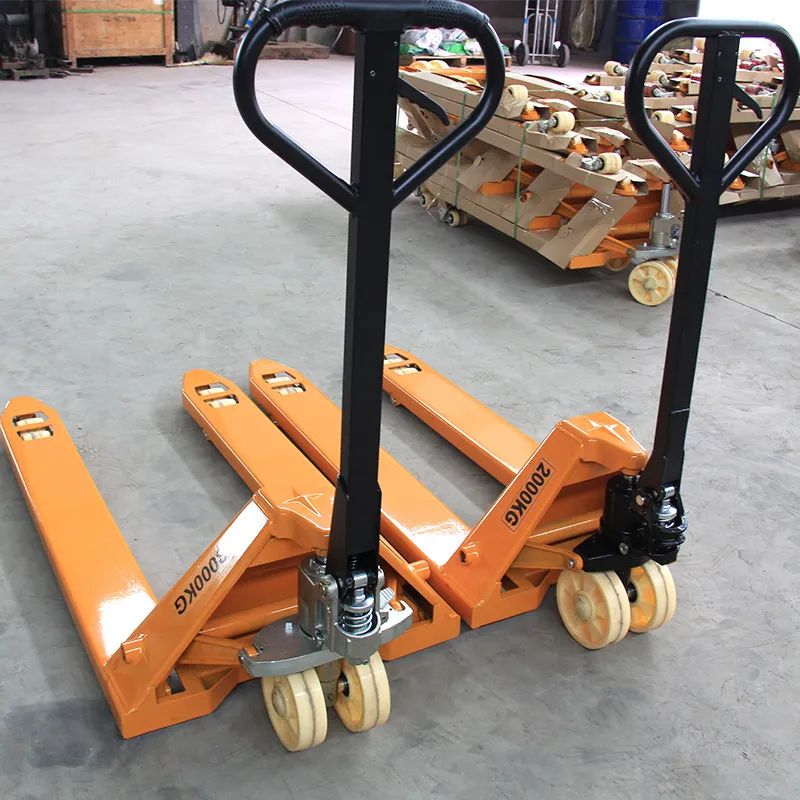Understanding the Features and Benefits of Double Girder Bridge Cranes for Heavy Lifting
Understanding Double Girder Bridge Cranes A Comprehensive Overview
Double girder bridge cranes are a critical component in many industrial settings, serving as powerful tools for material handling and transportation. Their design and functionality make them suitable for a wide range of applications, from manufacturing plants and warehouses to construction sites and shipyards. In this article, we explore the key features, benefits, and applications of double girder bridge cranes.
What is a Double Girder Bridge Crane?
A double girder bridge crane consists of two parallel girders that support the hoisting mechanism, usually mounted on tracks that run along the length of the bridge. This construction style provides a robust and stable platform capable of handling heavy loads. The girders are typically made from high-strength steel to ensure durability and safety during operation. The hook or lifting attachment is moved by a trolley that travels along the girders, allowing for precise control over the load's position.
Key Features
1. Increased Lifting Capacity Double girder cranes often offer a higher lifting capacity compared to their single girder counterparts. This is primarily due to the additional girder, which distributes the weight more evenly and provides greater stability when lifting heavier loads.
2. Enhanced Lifting Height The design of double girder cranes allows for a greater lifting height. The hoist can be suspended on the lower flange of the girders, providing more space between the hook and the ground, which is advantageous for loading and unloading operations.
3. Robust Construction The use of two girders adds to the overall strength and stability of the crane. This construction minimizes deflection and ensures that the crane can withstand heavy loads and dynamic forces that may occur during operation.
4. Versatile Configuration Double girder cranes can be customized to suit a variety of applications. They can be equipped with different hoist types, trolleys, and lifting equipment to meet specific operational needs.
double girder bridge crane

Benefits
1. Improved Safety The structural integrity of double girder cranes contributes to safer operations. With a lower risk of structural failure, operators can work with confidence, knowing that the equipment is designed to handle significant loads.
2. Increased Efficiency The ability to lift heavier loads quickly and safely ensures that operations can be conducted efficiently. This increased productivity can lead to reduced operational costs and quicker turnaround times.
3. Long Lifespan The robustness of double girder cranes ensures that they can withstand the rigors of heavy use and environmental factors, resulting in a longer lifespan with minimal maintenance.
4. Cost-Effective Investment While the initial investment for a double girder crane may be higher than that of a single girder, the long-term benefits and savings achieved from improved efficiency and reduced downtime make it a cost-effective choice for many businesses.
Applications
Double girder bridge cranes are widely used across various industries due to their capabilities. Common applications include
- Manufacturing Used in factories to lift and transport heavy materials, components, and finished products along the production line. - Construction Ideal for handling construction materials, equipment, and supplies on building sites. - Shipbuilding Essential for moving heavy ship components and materials through different stages of production. - Warehousing Employed in storage facilities for loading and unloading goods from trucks or containers. - Logistics Used in distribution centers for efficient handling of large quantities of products.
Conclusion
Double girder bridge cranes stand out as a vital tool in modern industrial operations. Their robust design, enhanced lifting capabilities, and safety features make them suitable for various applications, ultimately leading to improved efficiency and productivity. For businesses looking to streamline their material handling processes, investing in a double girder bridge crane can provide the necessary advantage to thrive in a competitive landscape. As industries continue to evolve, these cranes will play an integral role in shaping the future of material handling and logistics.
-
Unlock Seamless Relocation with Our Heavy Equipment Moving ExpertiseNewsJun.06,2025
-
Unleash Unrivaled Flexibility with Our Adjustable Gantry CraneNewsJun.06,2025
-
Unleash Heavy-Duty Efficiency with Our Industrial Gantry Crane SolutionsNewsJun.06,2025
-
Revolutionize Steel Handling with Our Magnetic Lifter RangeNewsJun.06,2025
-
Master Equipment Mobility with Premium Machinery Mover SolutionsNewsJun.06,2025
-
Elevate Your Material Handling with Magnetic Lifter TechnologyNewsJun.06,2025
-
YS Permanent Lifting Magnets: The Smarter Way to Handle SteelNewsMay.22,2025
